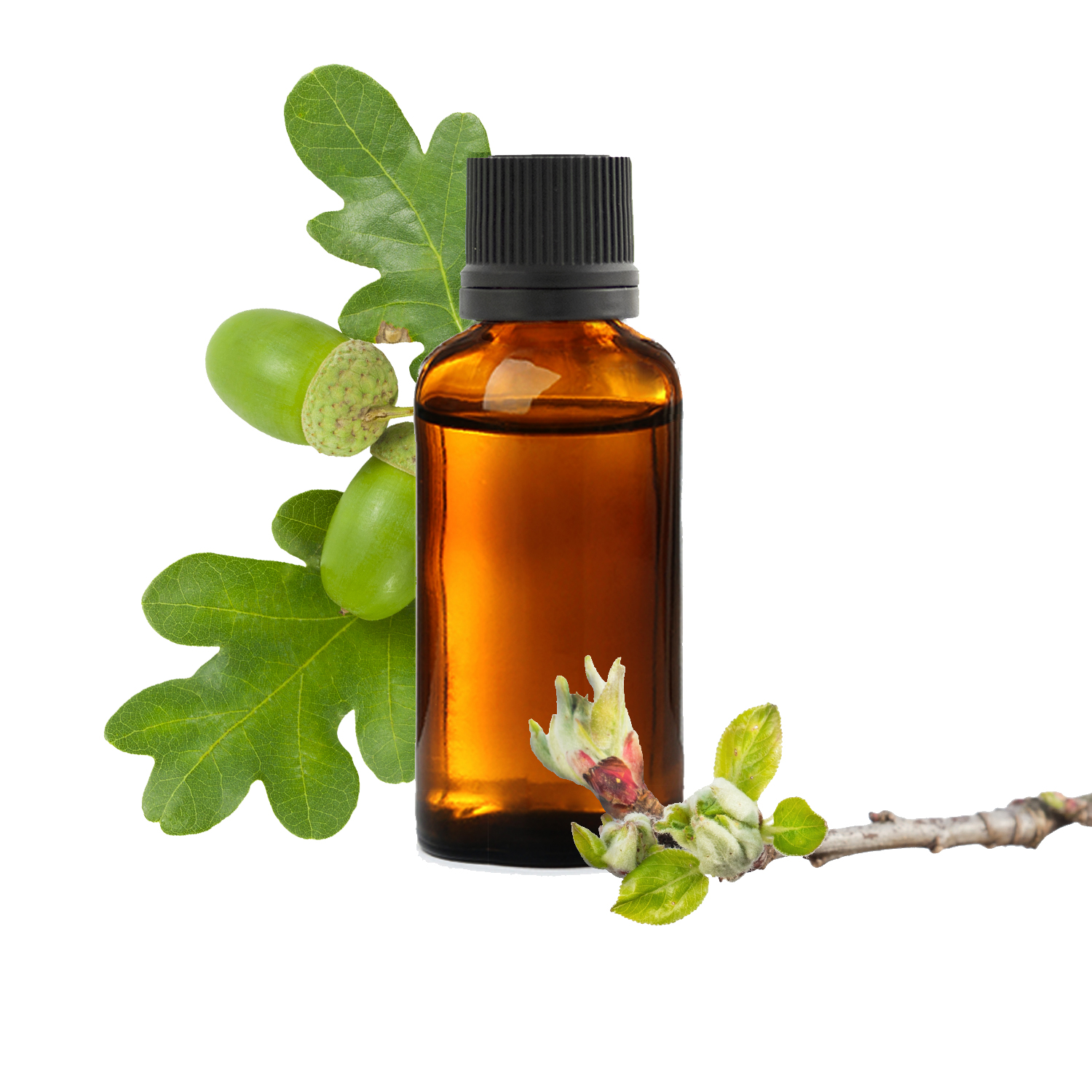
The Oak is one of the most common trees in France, existing in multiple species, Quercus sp. It provides man with a bud of youth whose macerate is a major hormonal stimulant. The latter is recommended to support the body both physically and psychologically, whether to combat severe fatigue or stimulate sexual tone. It is a harmonious tree, which represents rooting and openness, and which will be effective in restoring balance and cohesion in your body. Oak bud macerate will be very suitable for situations of severe fatigue, convalescence and male senescence. Latin name: Quercus pedunculata. Part used: Fresh buds
This article was updated on 19/07/2023For what problems should it be used?
-
Endocrine system ++++ : Andropause
-
Nervous system ++++ : fatigue, overwork, asthenia
-
Urogenital system ++++ : Decreased libido, Impotence
-
Cardiac system +++ : Hypotension
-
Digestive system +++ : Constipation
-
Immune and respiratory system ++ : Herpes
-
Cutaneous system ++ : Skin allergy, Psoriasis, Boil
How to use it alone?
Adults and adolescents : 5 to 15 drops per day in a glass of water, divided into 1 to 3 doses during the day depending on the case, 15 minutes before a meal for 3 weeks. Start with 5 drops and increase gradually:
- or one drop per day up to 15,
- i.e. 5 drops the first week, 10 the second and 15 the last.
Children over 3 years old : 1 drop per day for 10 kilos. Start with 1 drop and gradually increase.
Synergistic uses
Hypotension
In case of hypotension, Oak bud macerate can be used in combination with a cardiac regulator such as oak bud macerate.Hawthorn.
Main properties
-
general stimulant, adrenal stimulant :
oak bud macerate energizes the body in general by stimulating the different endocrine glands such as the adrenals or the pituitary gland. It exerts a tonic action on both the nervous and physical levels. Thanks to its cortison-like activity, it is effective on states of fatigue and exhaustion linked to stress, physical or intellectual activity. Its toning effect is also exerted on the arterial, capillary and venous blood vessels and at the digestive level. It therefore has hypertensive properties and acts against constipation. Finally, it slightly tones the alveo-dental ligaments in cases of periodontitis, and promotes healing of the gum mucosa.
-
sexual tonic :
oak bud macerate is widely renowned for its stimulating action on the sexual endocrine glands. It improves the physiological functions of the reproductive, genital and urinary systems of both sexes. It stimulates the activity of the testicles, the production of testosterone and sperm. For this reason, it is a bud generally described as useful in male senescence, as a sexual tonic.
Precautions for use
- Oak bud macerate is a herbal food supplement. It does not replace a varied diet and a healthy lifestyle. It is important to keep it out of the reach of children and not to exceed the recommended daily dose. Dosages must be adapted for young children.
- Oak bud macerate is authorized for the whole family, except for babies under 3 years old and pregnant women.
- Do not use in case of hormonal disorders dependent on excess testosterone.
- Use with caution in case ofhypertension.
- Be careful, this bud macerate is cortison-like and to take preferably in the morning.
- Store away from light and heat.
What does a good Oak bud macerate look like?
Botanical characteristics
- Latin name: Quercus pedunculata Hoffm.
- Botanical family: Fagaceae
- Distilled part: fresh buds
Composition
- Composition: Alcohol* 32%, Water, Vegetable Glycerin*, Oak bud extract (Quercus pedunculata Hoffm.)*.
Organoleptic characteristics
- Appearance: liquid - possible cloudiness
- Color: reddish brown
- Odor: woody, slightly alcoholic.
- Taste: alcoholic, resinous.
Was this article helpful to you?
Average grade: 4.7 ( 219 votes)
Bibliography
Work : Piterà di Clima, F., & Nicoletti, M. (2018). Summary of gemmotherapy - Scientific foundations of Meristemotherapy. Amyris Editions.
Work : Boistard, S. (2016). Gemmotherapy - Buds for health - Practical and family guide. Terran Publishing.
Work : Andrianne, P. (2011). Treatise on gemmotherapy: Therapy using buds. Amyris Editions.
Work : Halfon, R. (2011). Gemmotherapy - Health through buds. Dangles Editions.
Work : Ledoux, F., & Guéniot, G. (2014). Phytembryotherapy: The embryo of gemmotherapy. Amyris Editions.
Work : Pineau, L. (2019). The great book of gemmotherapy. Leduc.s Éditions.


